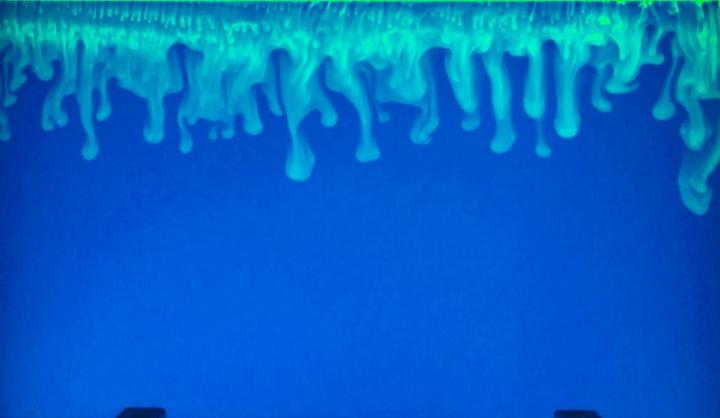Research within the vision topic
Motivation
Calcite dissolution is often driven by carbonic acid in subsurface systems. This is of crucial importance for karstic systems, where CO2 is the main driver of karstification, but it is also relevant in large-scale geological CO2 sequestration in deep saline aquifers, where calcite-aggressive waters may dissolve rocks and thus create pathways. In karstic systems, there is, similar as in the vision topic ‘salt’ a strong coupling to the atmosphere since CO2 concentrations in caves are typically influenced by atmospheric processes like precipitation, temperature variations, or barometric fluctuations. Another similarity to processes that are relevant also in the salt vision topic, is the occurrence of density-driven instabilities; in this particular case, this appears at the gas-water interface, where CO2 dissolves from the gas phase into the water phase, leading to an increase of density at the interface and thus to an instable layering with convection enhanced dissolution as a result.
Research questions
Research questions, we address, are the following:
- How to predict dissolution rates in porous rock or fractured media dependent on flow regimes, transport time scales, or reaction kinetics, etc.?
- How to identify the driving forces for CO2 replenishment in karstic systems beyond the established karstification theories, i.e. in particular in stagnant water bodies?
Involved Researchers
Strategy
Several projects within SFB 1313 have dedicated work packages for the vision topic calcite dissolution. Additionally, associated researchers, closely related to the work of SFB 1313 but not financed by SFB 1313, complete the team working on the vision topic.
Involved Projects
Publications concerning the vision topic
(Journal-) Articles
- Keim, L., & Class, H. (2025). Rayleigh Invariance Allows the Estimation of Effective CO2 Fluxes Due To Convective Dissolution Into Water-Filled Fractures. Water Resources Research, 61, Article 2. https://doi.org/10.1029/2024wr037778
- Strauch, B., Zimmer, M., Wendel, K., Keim, L., & Class, H. (2025). Measuring carbonate dissolution rates under well-controlled conditions for reactive CO2-water flow in a large lab-scale karst fracture imitate. MethodsX, 14. https://doi.org/10.1016/j.mex.2025.103271
- Shokri, J., Ruf, M., Lee, D., Mohammadrezaei, S., Steeb, H., & Niasar, V. (2024). Exploring Carbonate Rock Dissolution Dynamics and the Influence of Rock Mineralogy in CO2 Injection. Environmental Science & Technology, 58, Article 6. https://doi.org/10.1021/acs.est.3c06758
- Class, H., Keim, L., Schirmer, L., Strauch, B., Wendel, K., & Zimmer, M. (2023). Seasonal Dynamics of Gaseous CO2 Concentrations in a Karst Cave Correspond with Aqueous Concentrations in a Stagnant Water Column. Geosciences, 13, Article 2. https://doi.org/10.3390/geosciences13020051
- Class, H., Bürkle, P., Sauerborn, T., Trötschler, O., Strauch, B., & Zimmer, M. (2021). On the Role of Density-Driven Dissolution of CO2 in Phreatic Karst Systems. Water Resources Research, 57, Article 12. https://doi.org/10.1029/2021wr030912
Contact

Holger Class
apl. Prof. Dr. Ing.Project Leader, Research Project C04, Central Project Z



